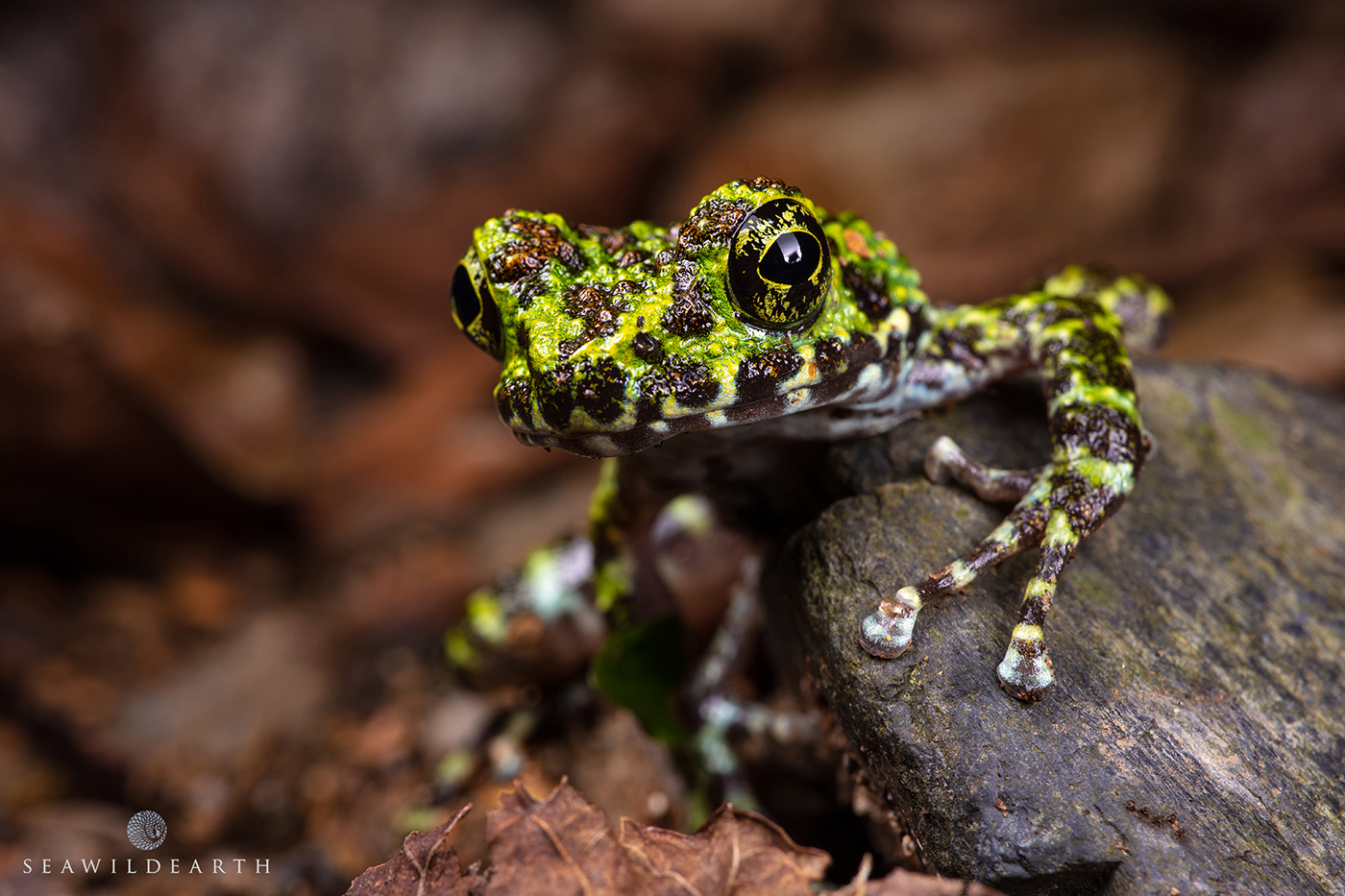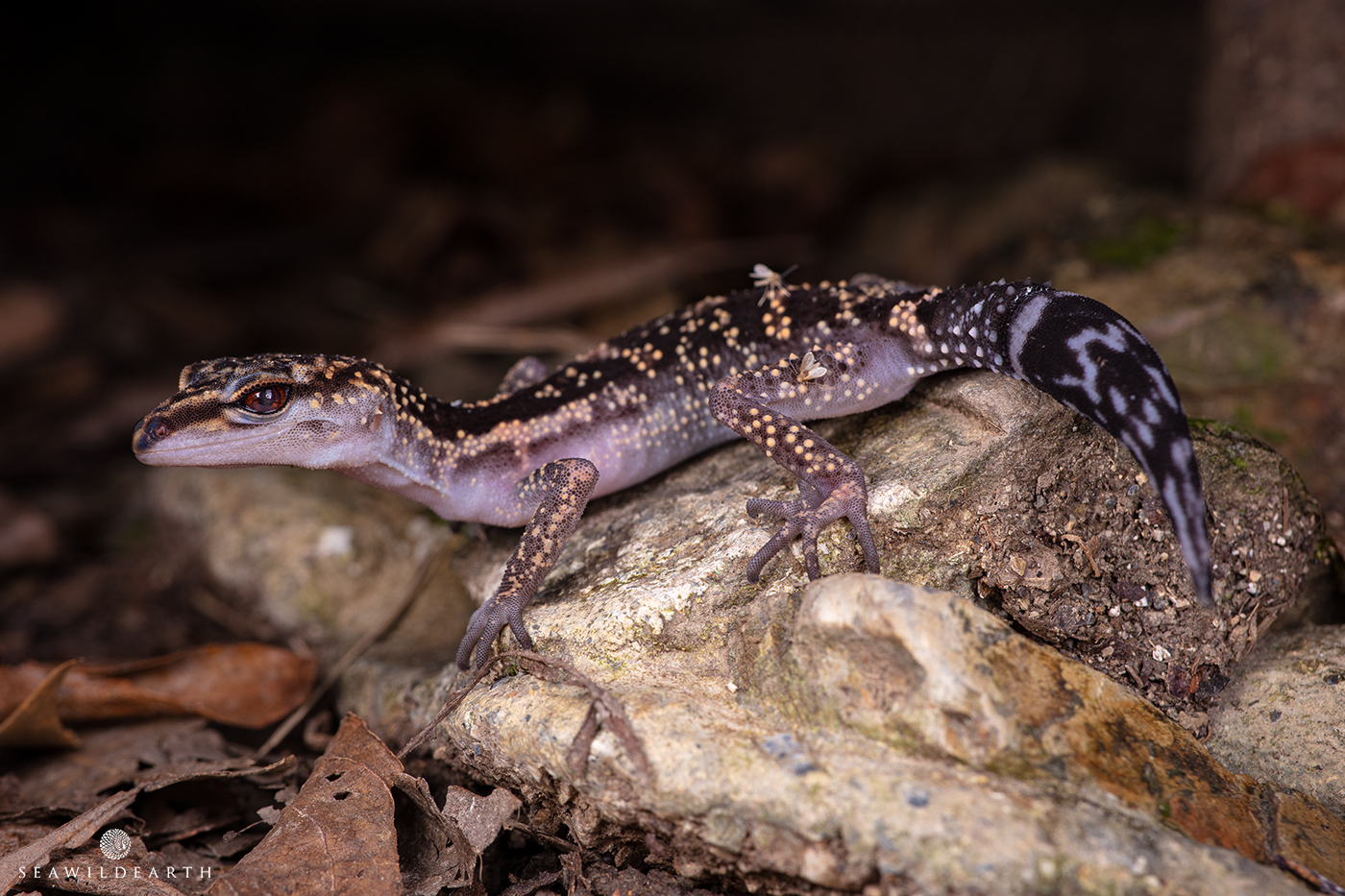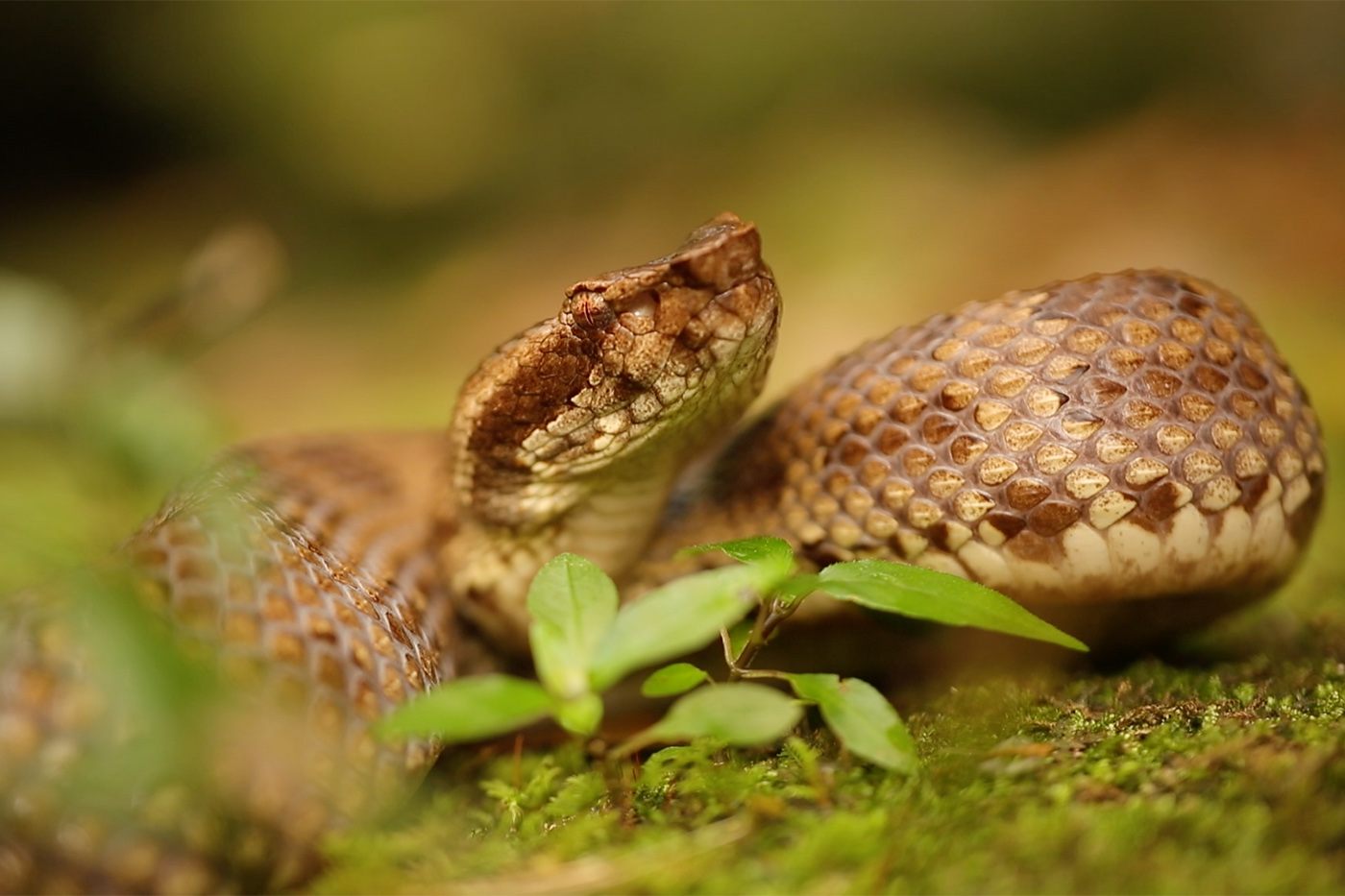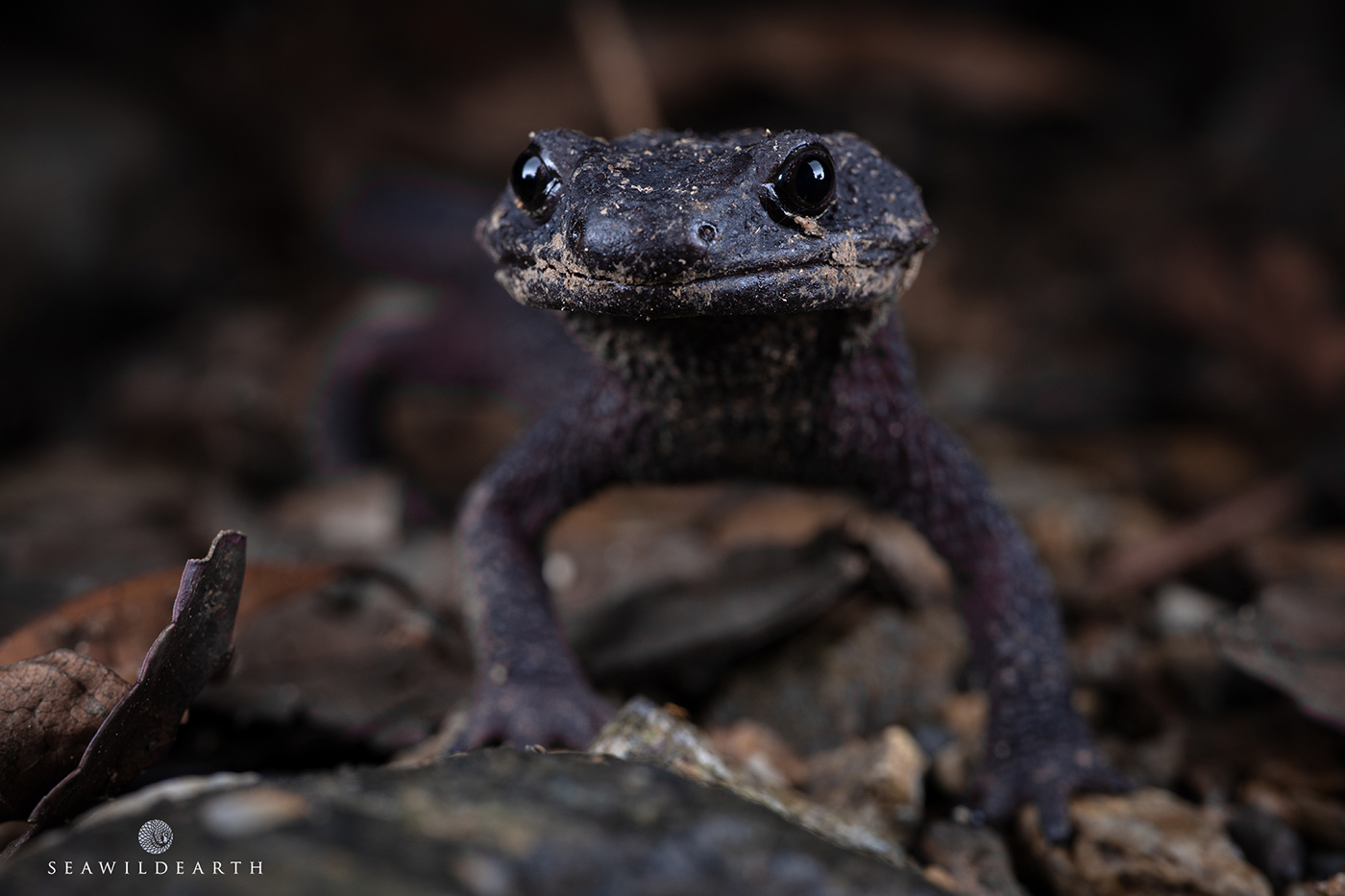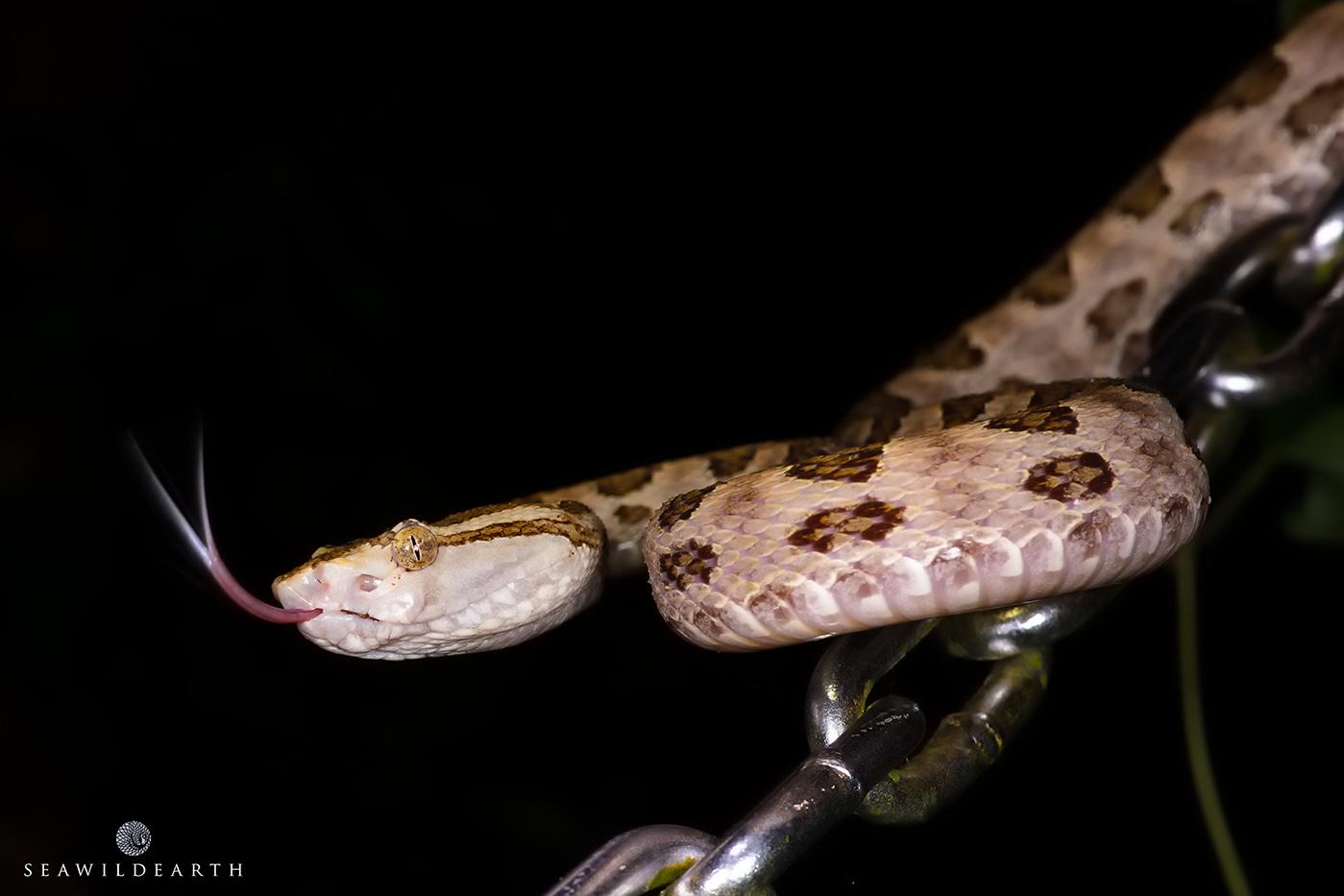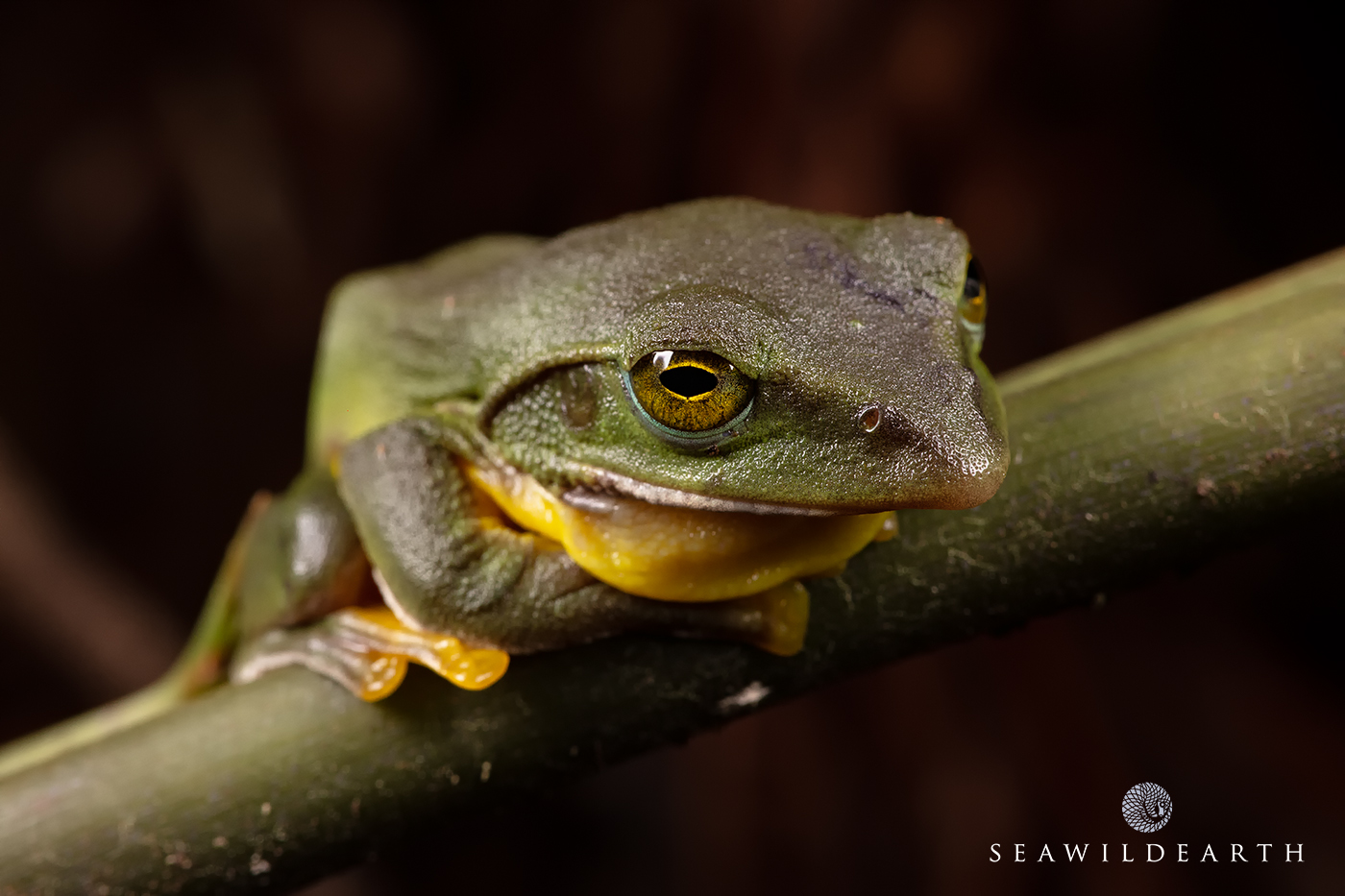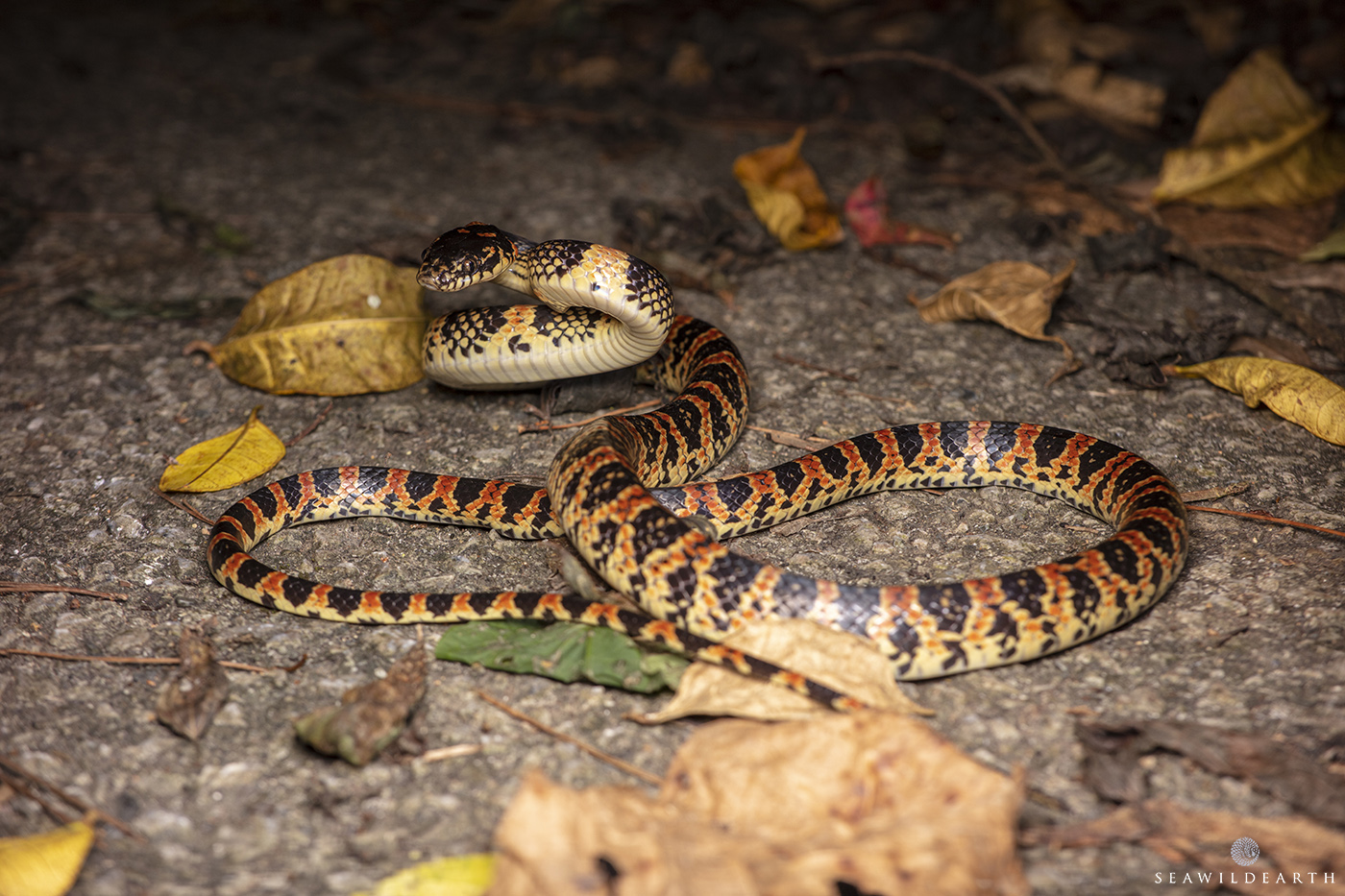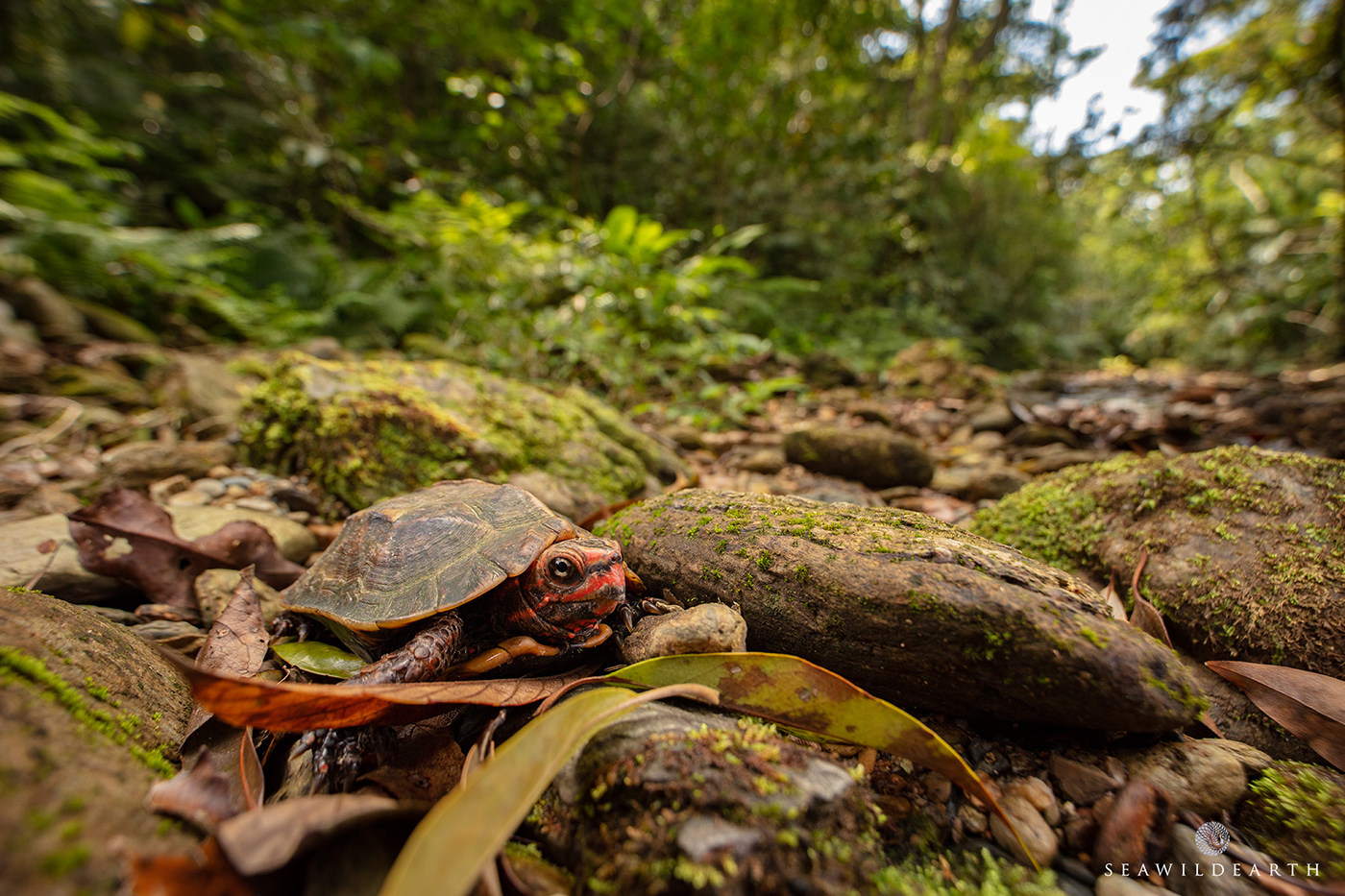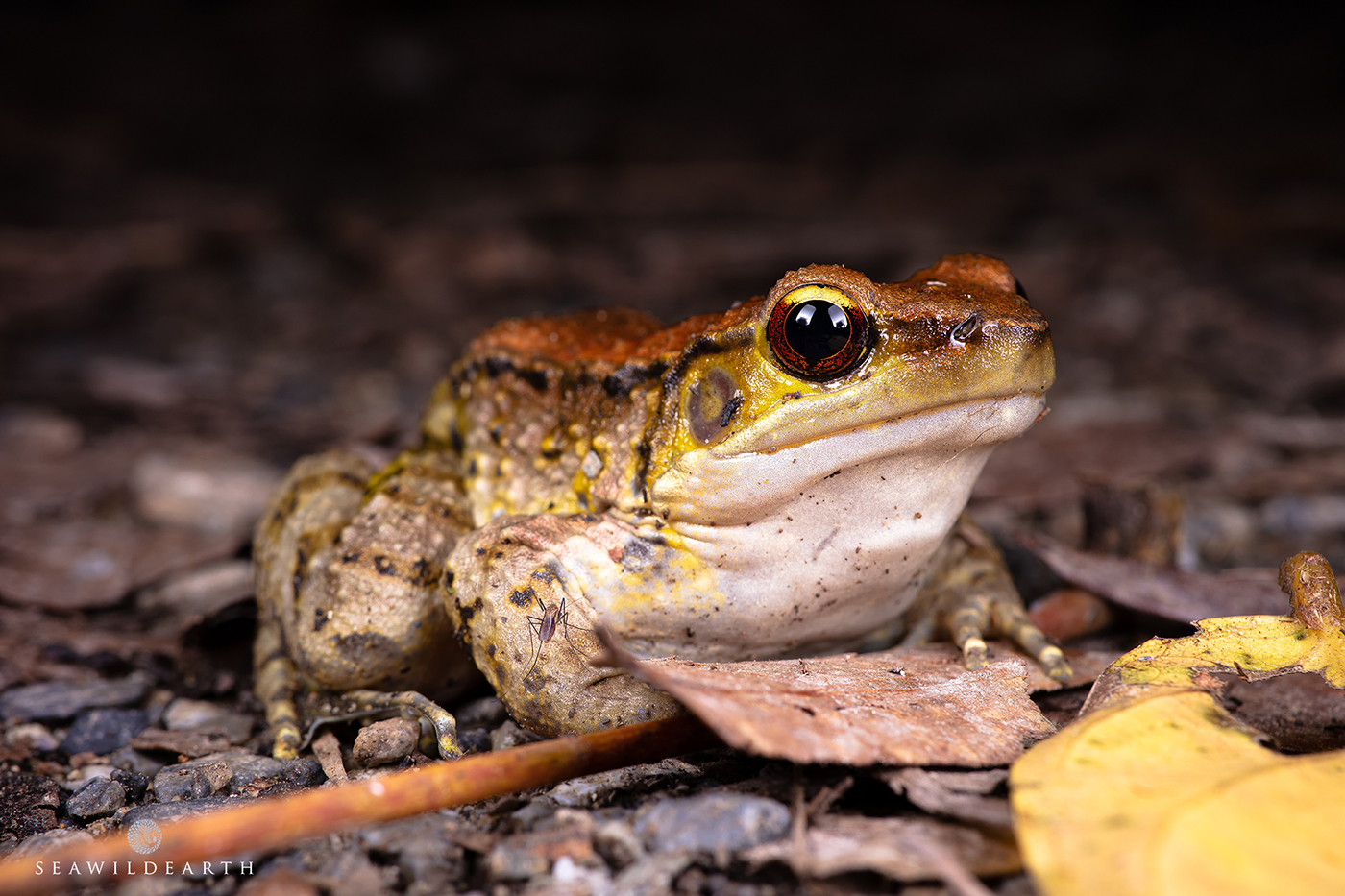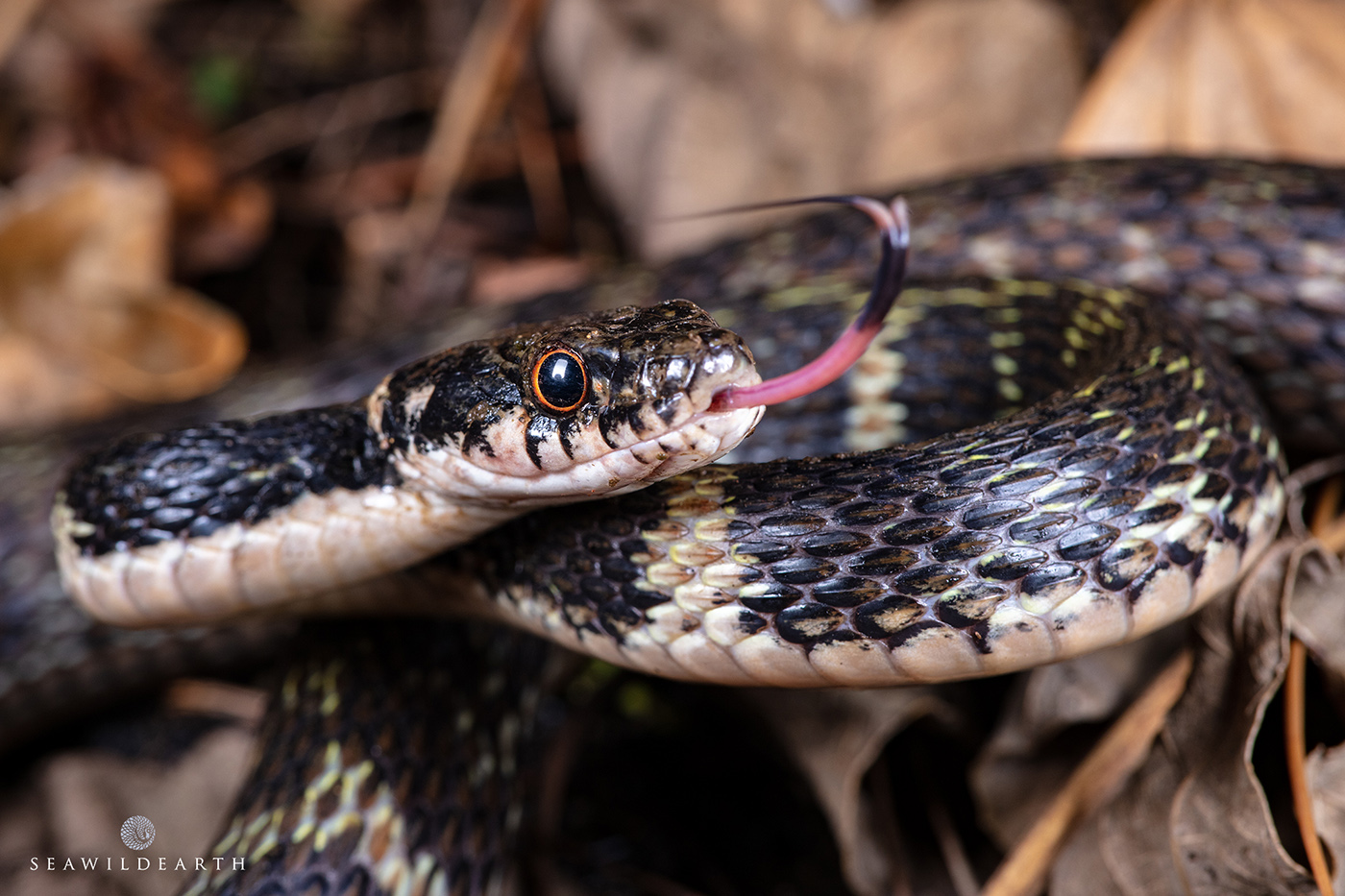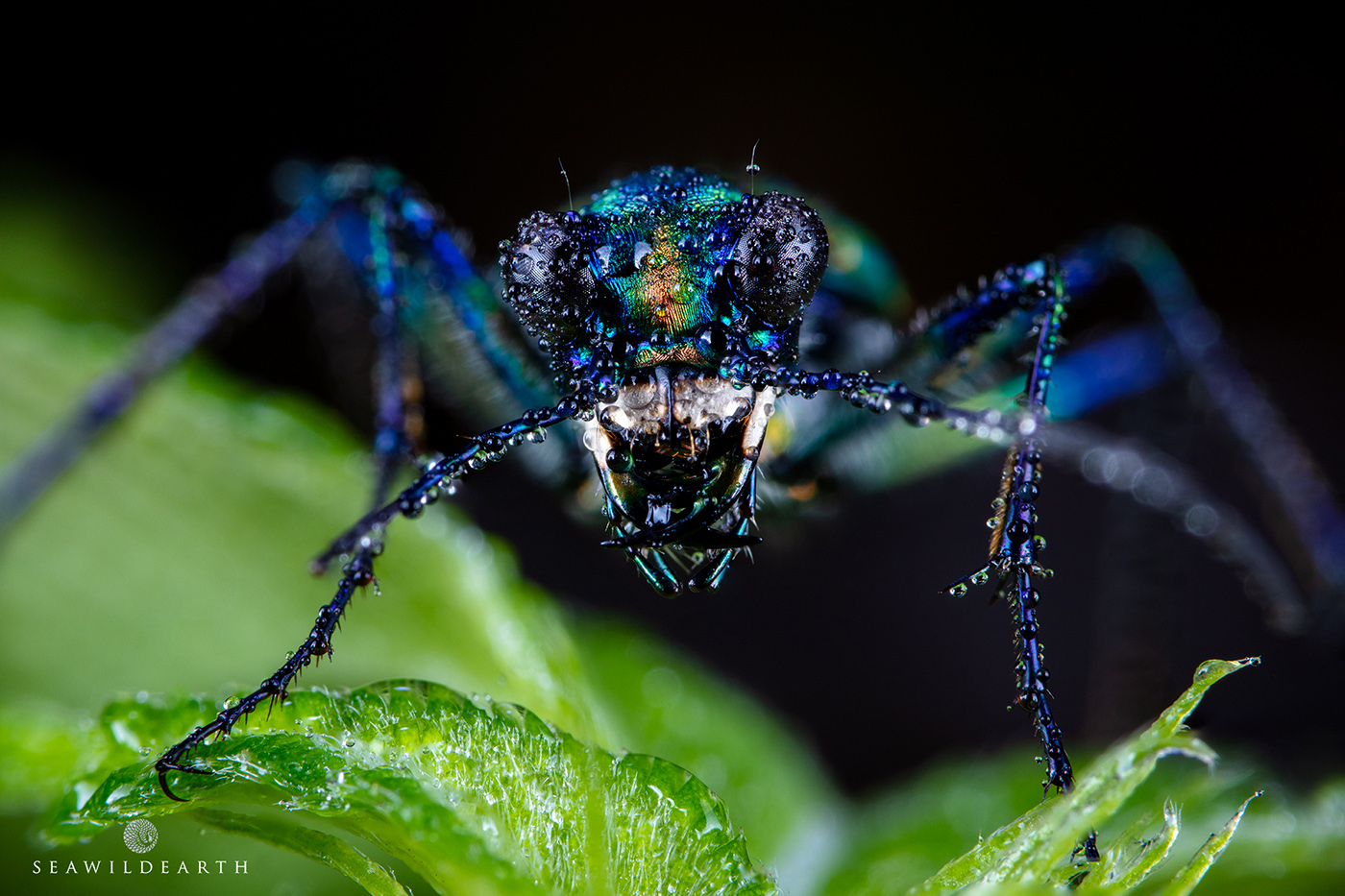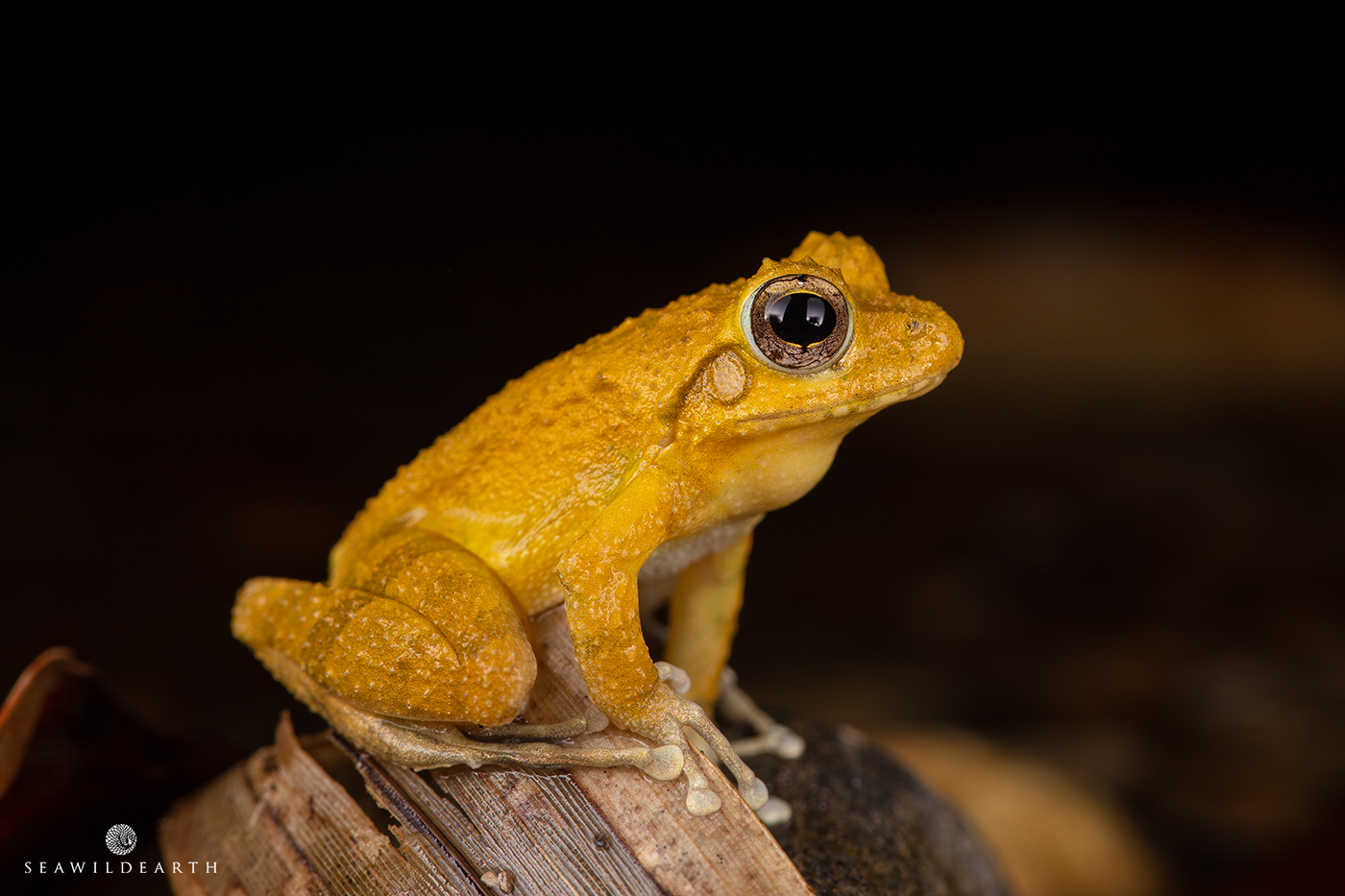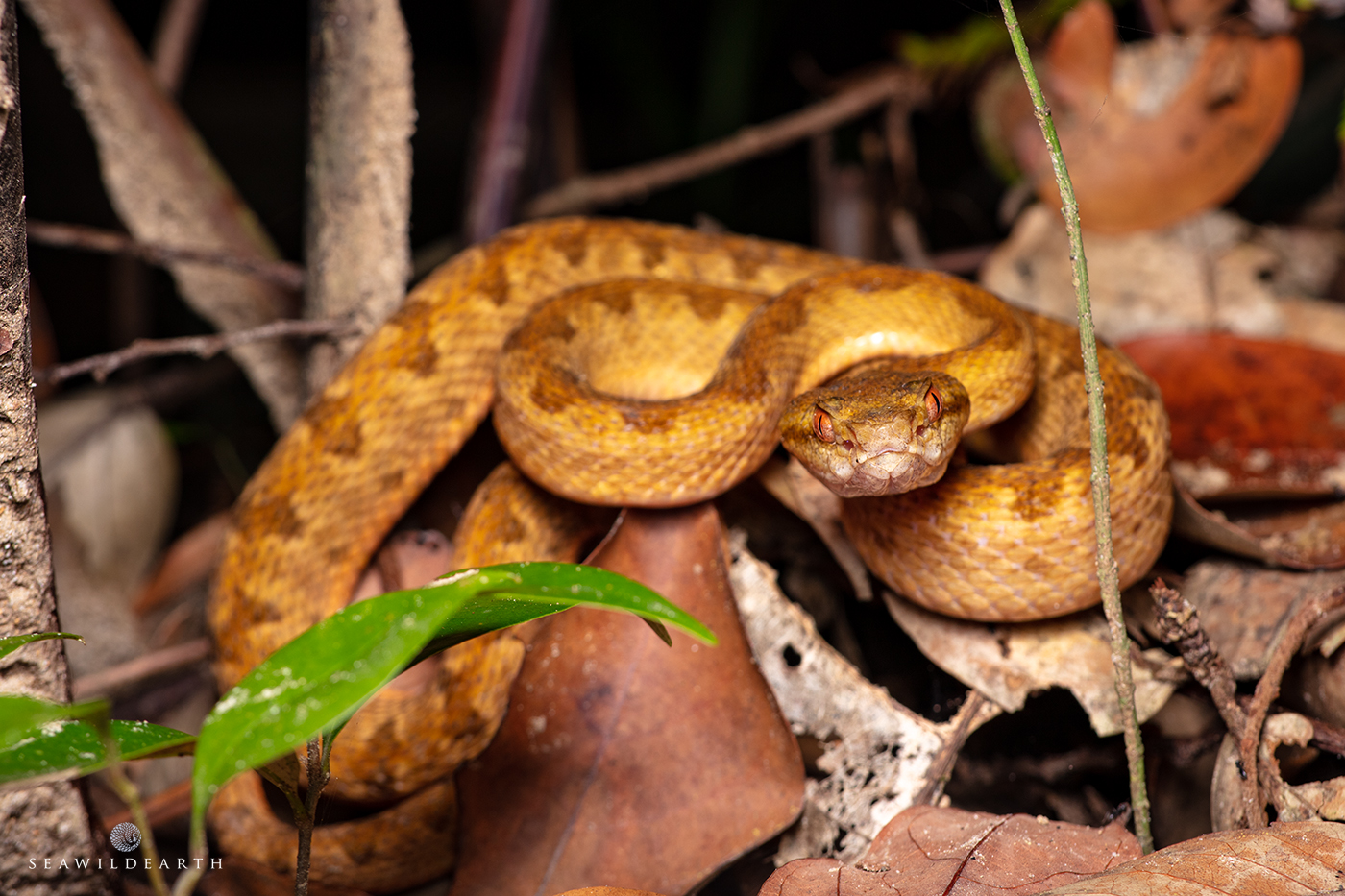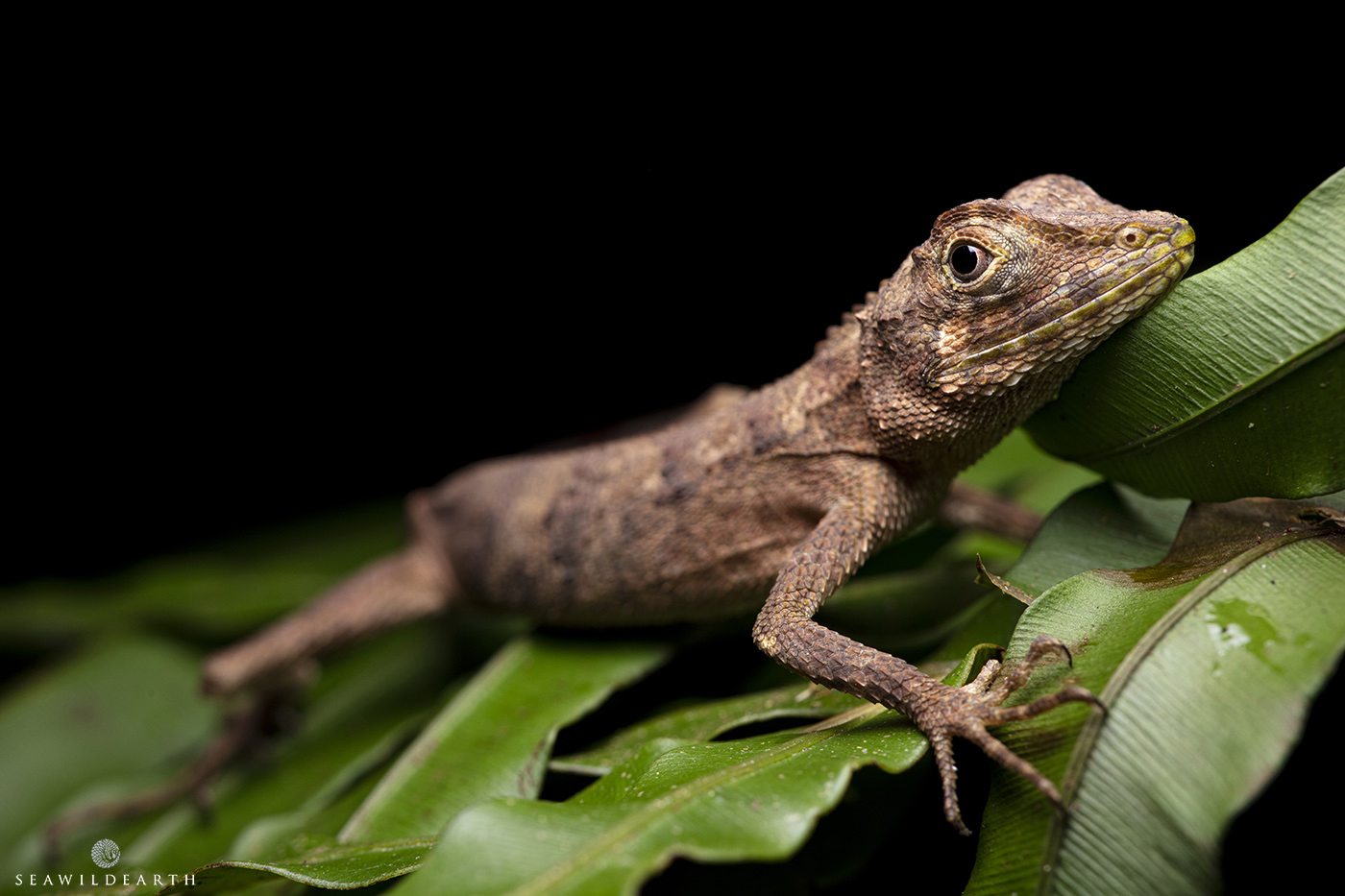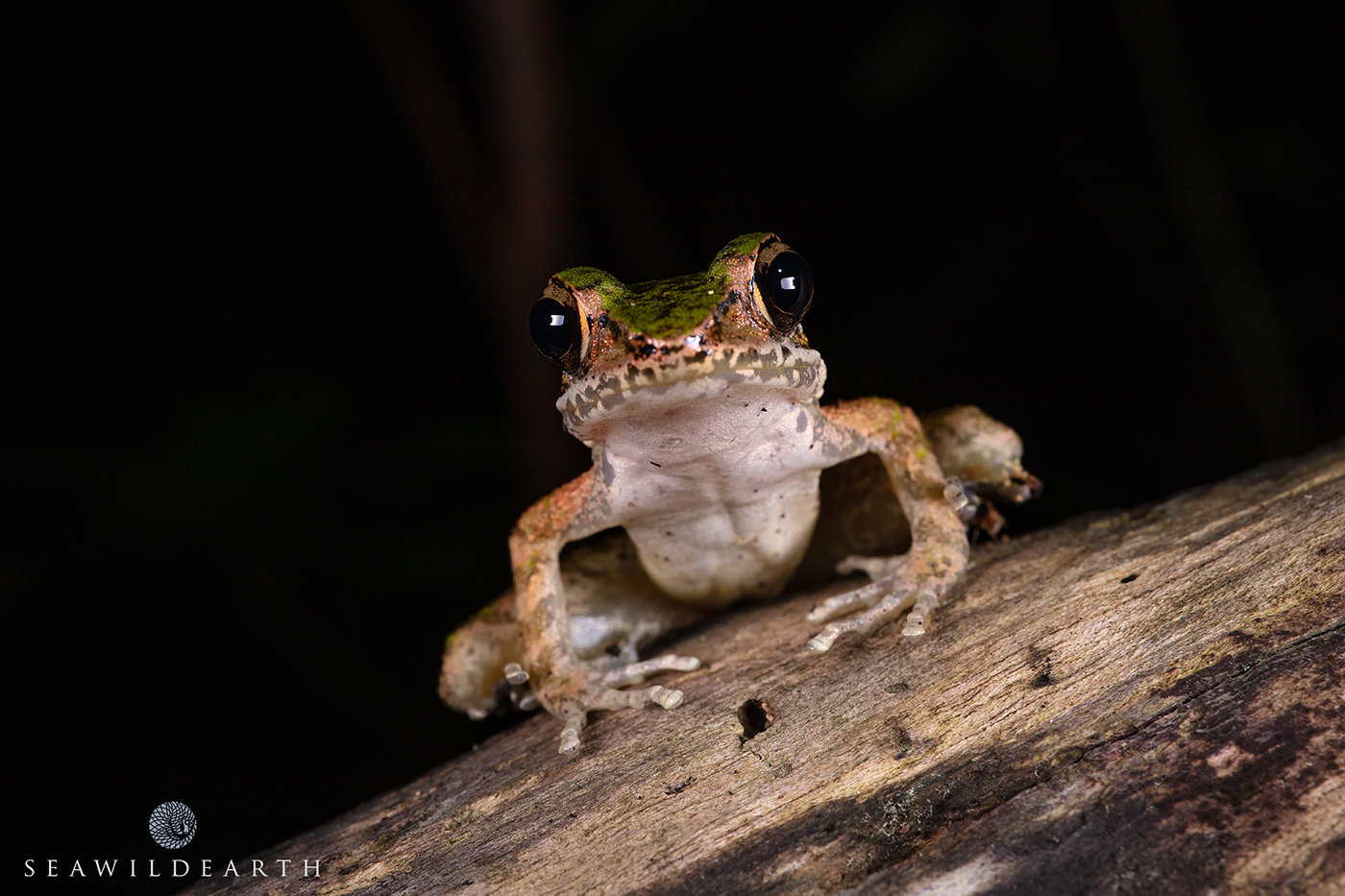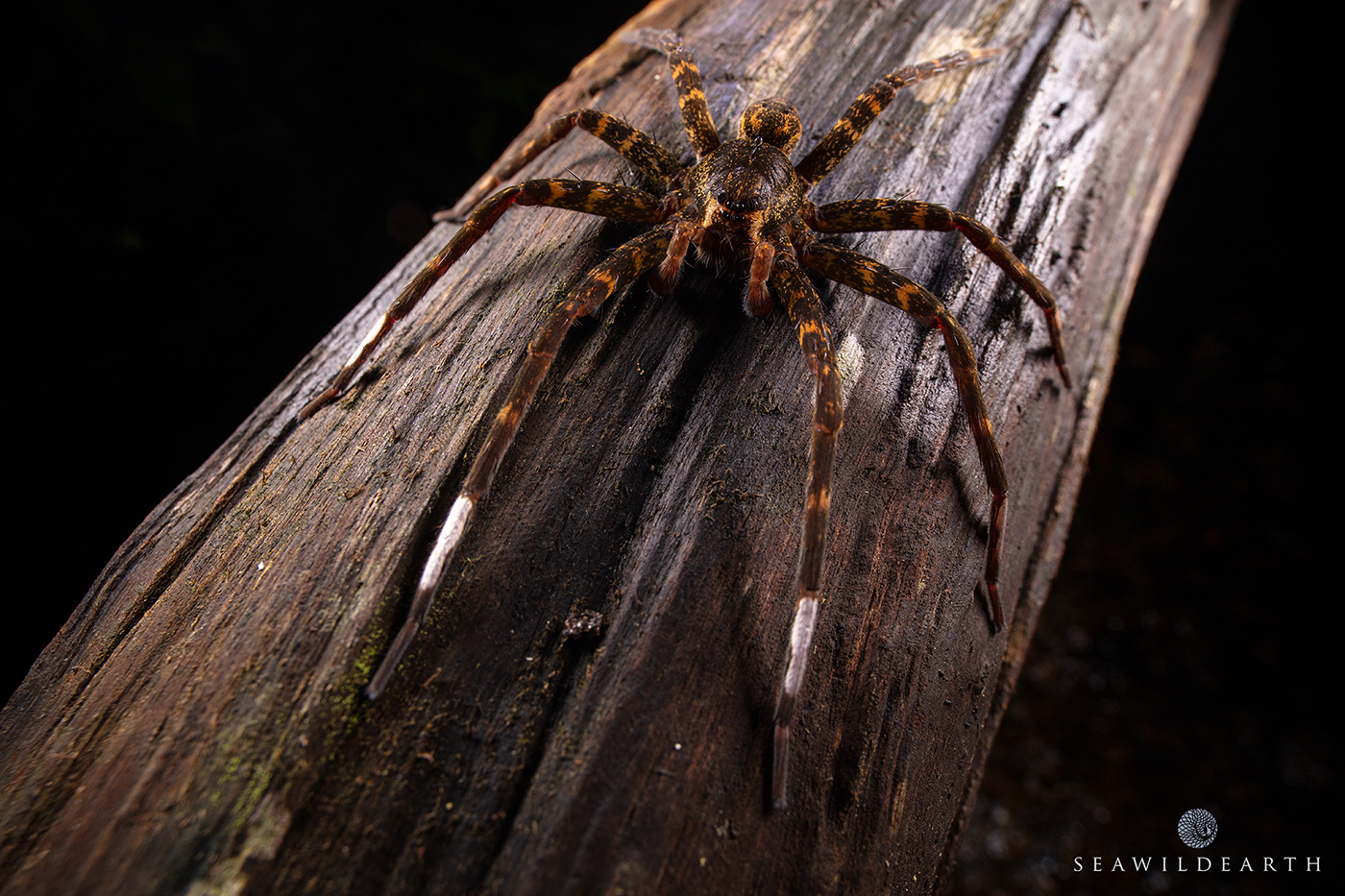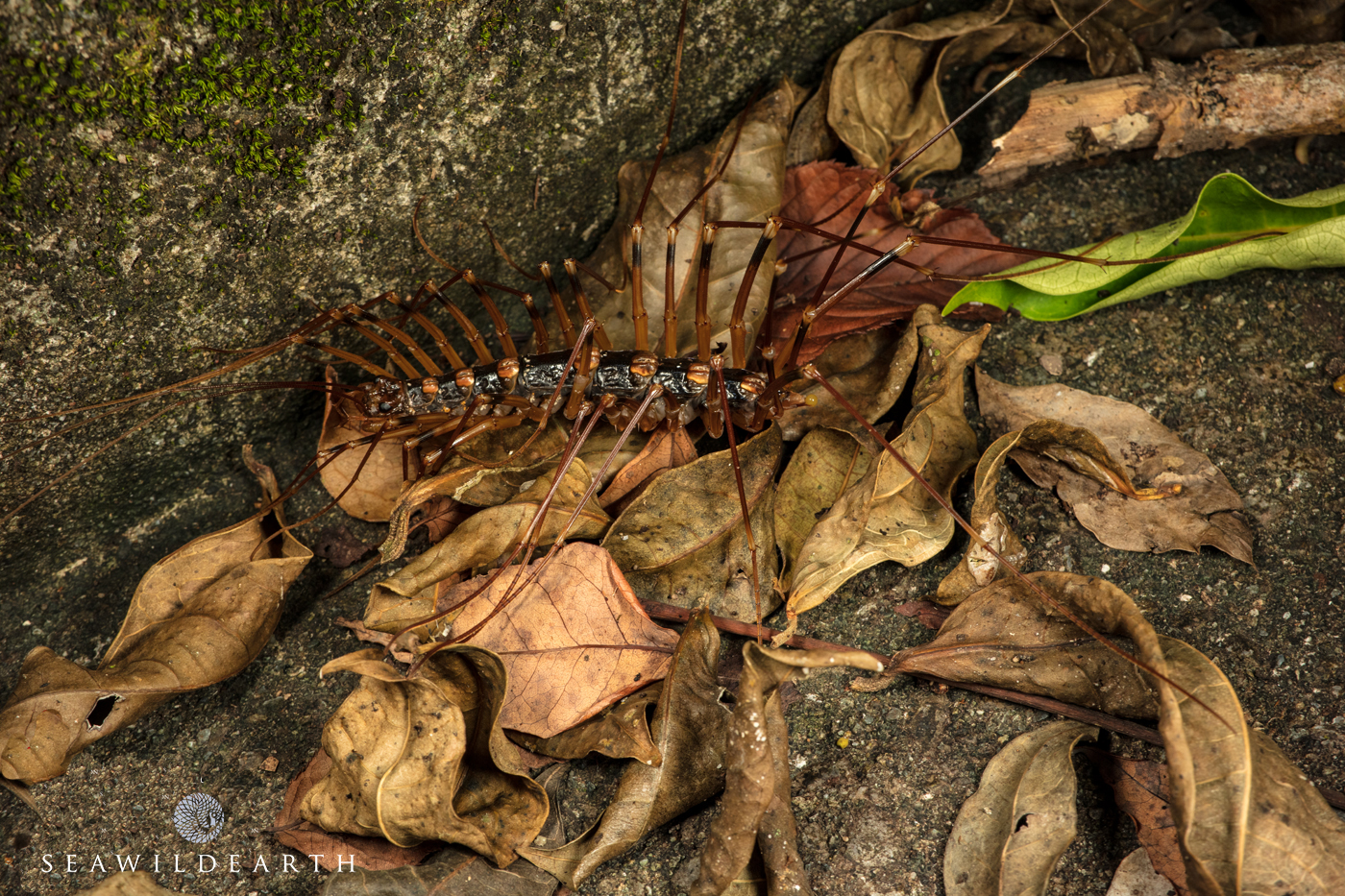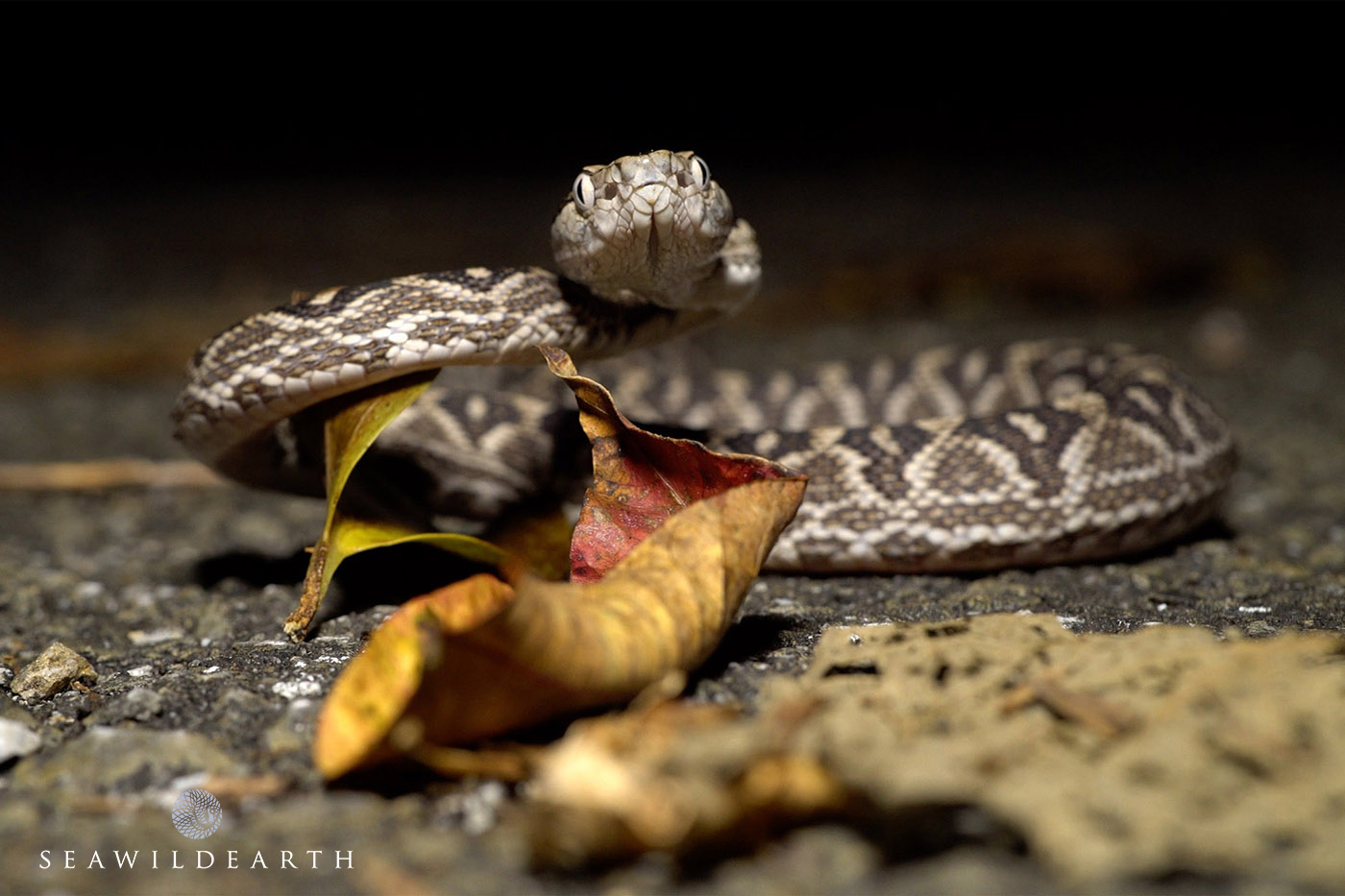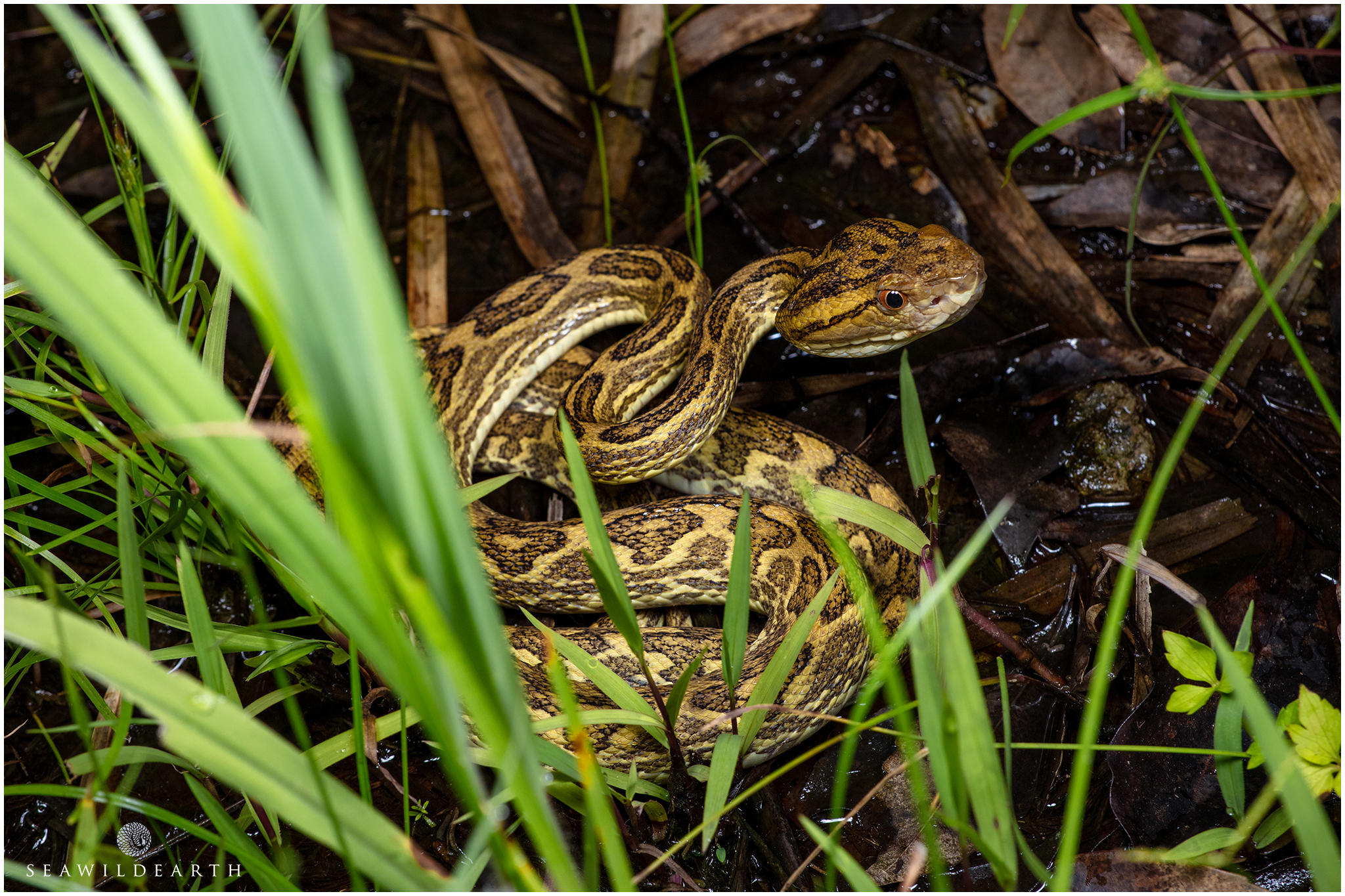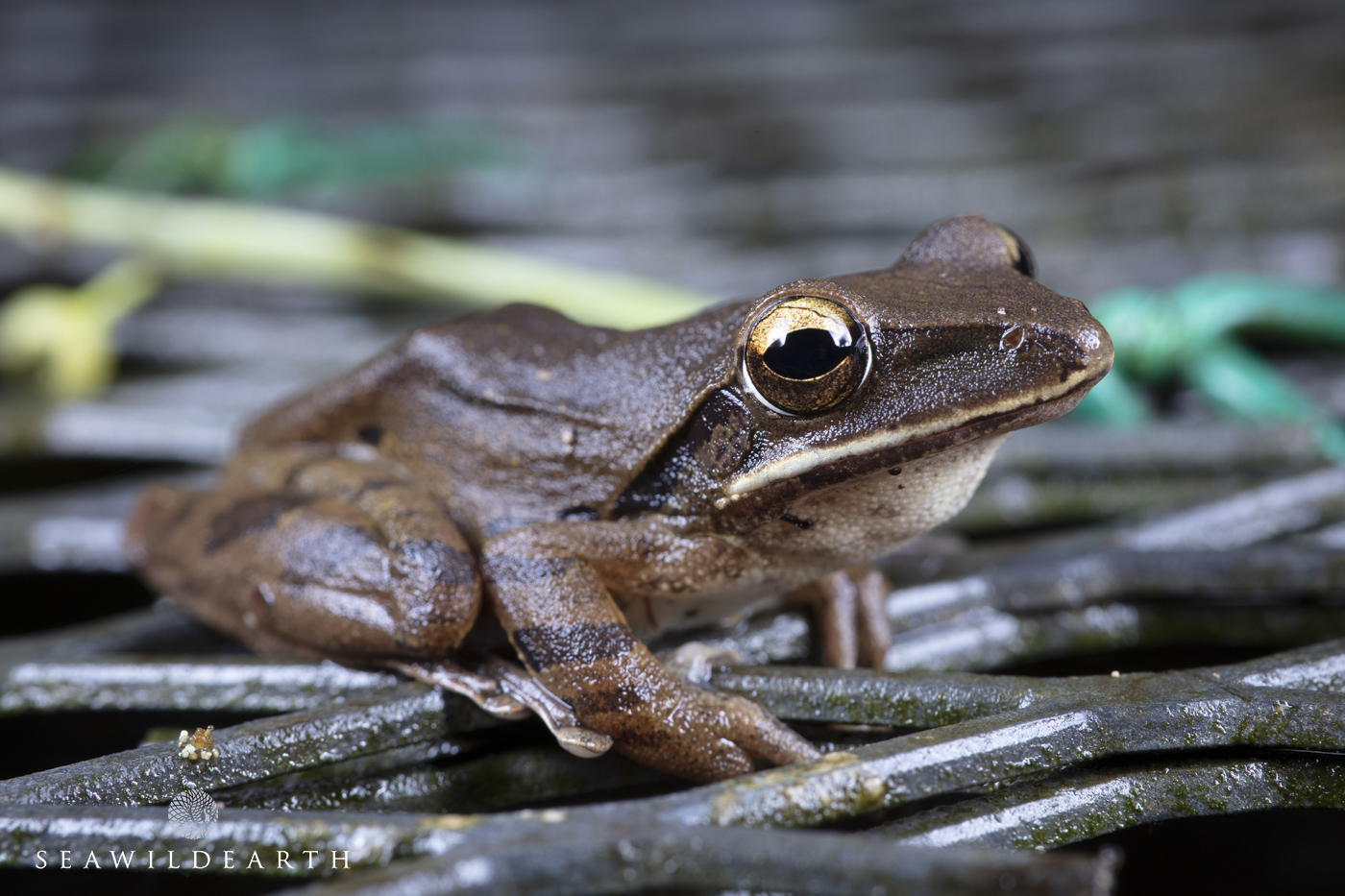Ever Thought About Herping Tours in Okinawa?
Herping tours in Okinawa should be top of your wish list if you're an avid nature lover. The main island of Okinawa is home to an incredible diversity of wildlife, whether avian, terrestrial or marine. Many of the land based wildlife species are endemic to the island with numerous species populations listed in various categories of endangerment.
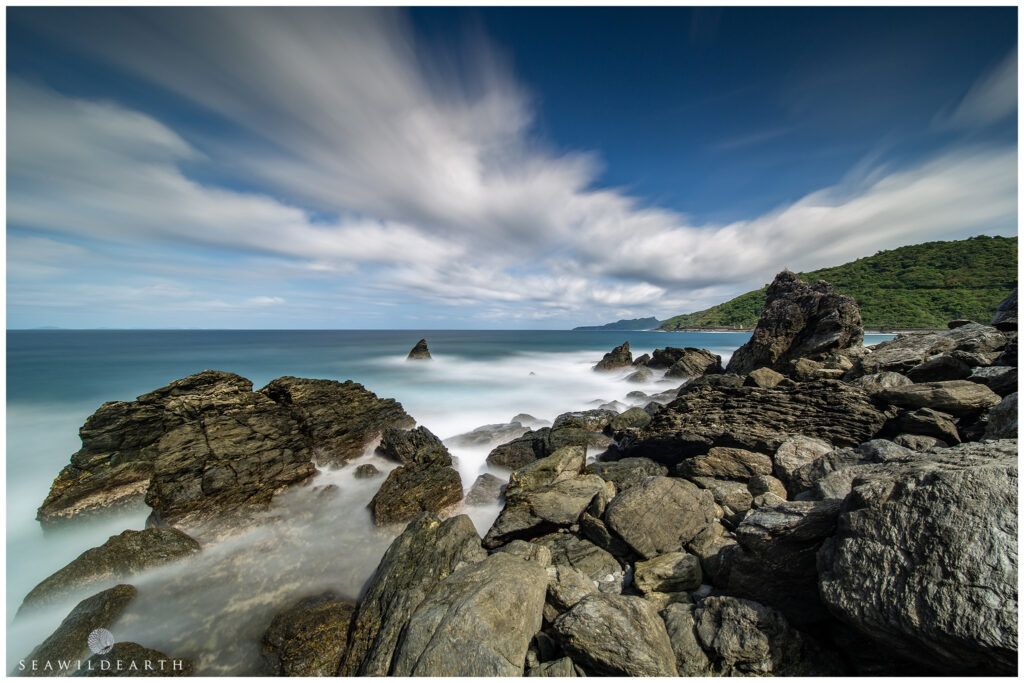
The typical rocky northern shores of Okinawa Island
Herping tours in Okinawa are now being offered by us here at seawildearth. Northern Okinawa is defined by two things, the rocky coastlines that are frequently battered by raging seas, and the green rolling hills of what is called the 'Yambaru' by the locals. This is a location that since moving to the island has been a large focus for the imaging exploits of seawildearth. From long exposure imaging potential of the dynamic Oceans into the green beating heart of the jungles. For it is here in the still of the green wonderland that magic can be found.
Okinawa is blessed with a myriad of incredible wildlife, much of it endemic to the island, insofar that it cannot be found anywhere else on Earth. Sadly many of the species found here are, again, endangered predominantly due to human encroachment and habitat destruction for development. Many species are also the target of poachers to feed the illegal wildlife and pet trade. When something becomes scarce, its value increases.
Given the island's elevated amount of annual rainfall, it is also a very green and wet environment. The rolling hills and precipitous rocky peaks are permeated by waterways and rivers that in certain areas, merge to create incredibly picturesque waterfalls and water features. Many of these features serve as tourist attractions, but there are some, quite a sizable number, which remain off of the main radars of most, and that is the way it should remain. The wildlife of the island requires these oases of tranquility where they should be allowed to exist in the way that nature intended.
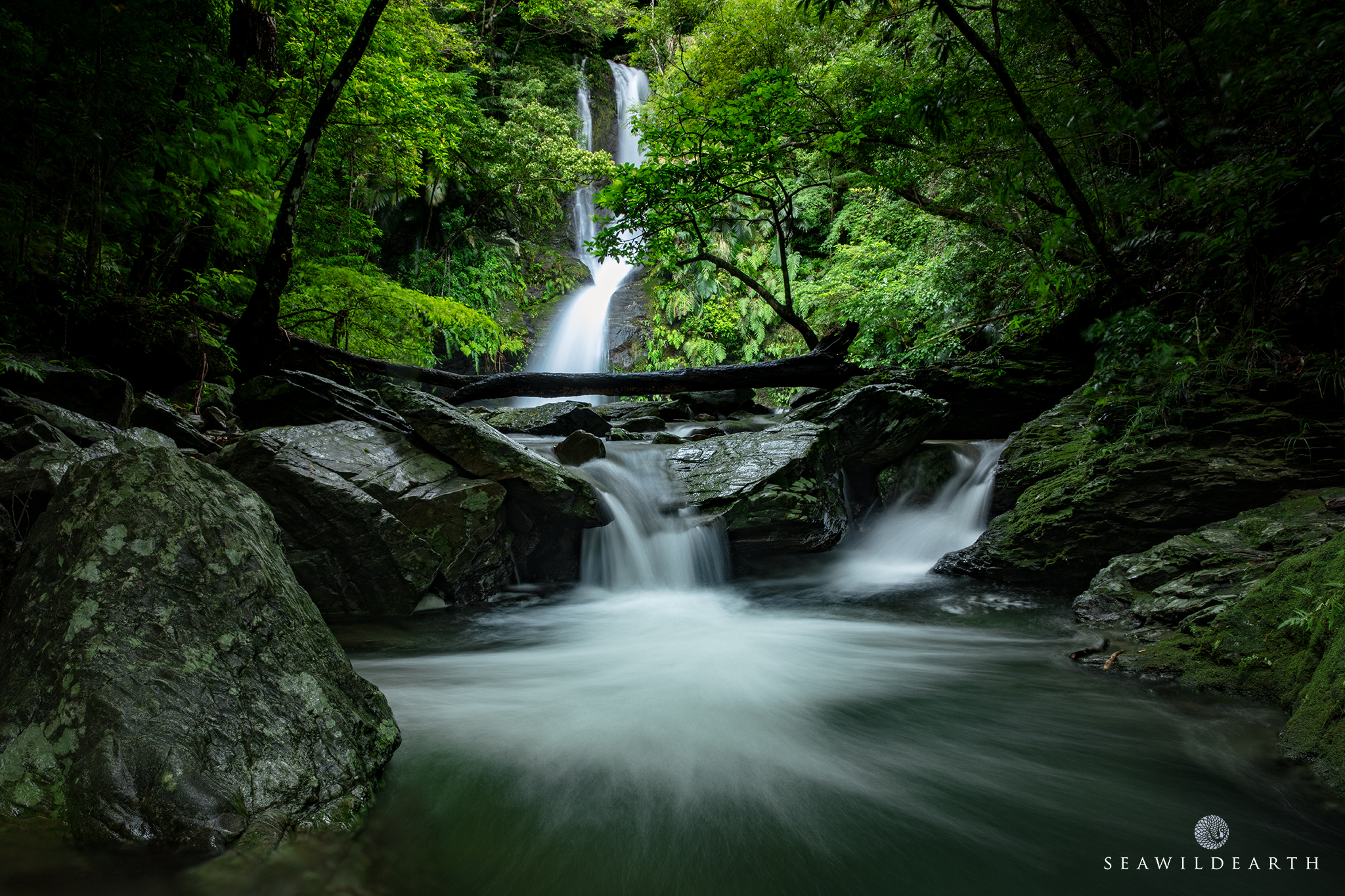
Tropical rains keep the island green.
Having documented numerous species and studied behavioral patterns over the past seven years, we are now ready to offer bespoke herping tours in Okinawa where we take people into the green beating heart of the northern jungles of Okinawa island. To date, we have escorted individuals and small groups from within Okinawa with an interest in the local flora and fauna. Our intention is not to look at creating a conveyor belt approach to tourism. We believe that the secrets of Okinawa be available to those who truly appreciate the beauty and fragility of their existence. To that end, we offer tours only to small, focused groups who are willing to forego the comforts of five-star accommodation. Those who are willing to seek out and meet the wildlife of Okinawa on its own terms in its own environment.
The aim of our herping tours in Okinawa is to provide encounters with unique wildlife based on the seasonal behavioral traits of the target species. Throughout the range of the year, there are numerous encounters to be had, with some more appealing than others depending on individual tastes and requirements. Not everyone is a 'snake person', but most love the endemic Gecko species for example. Given different species are prevalent at different times of the year it is prudent for potential guests to contact us prior to making any bookings. We can also create bespoke herping tours in Okinawa for small groups, again on request. Our aim is to unique experiences with as negative an impact on the species we seek. Simply reach out should you have any specific requests for herping tours in Okinawa. Our specialty is in assisting imaging-based concerns be they individual or commercial.
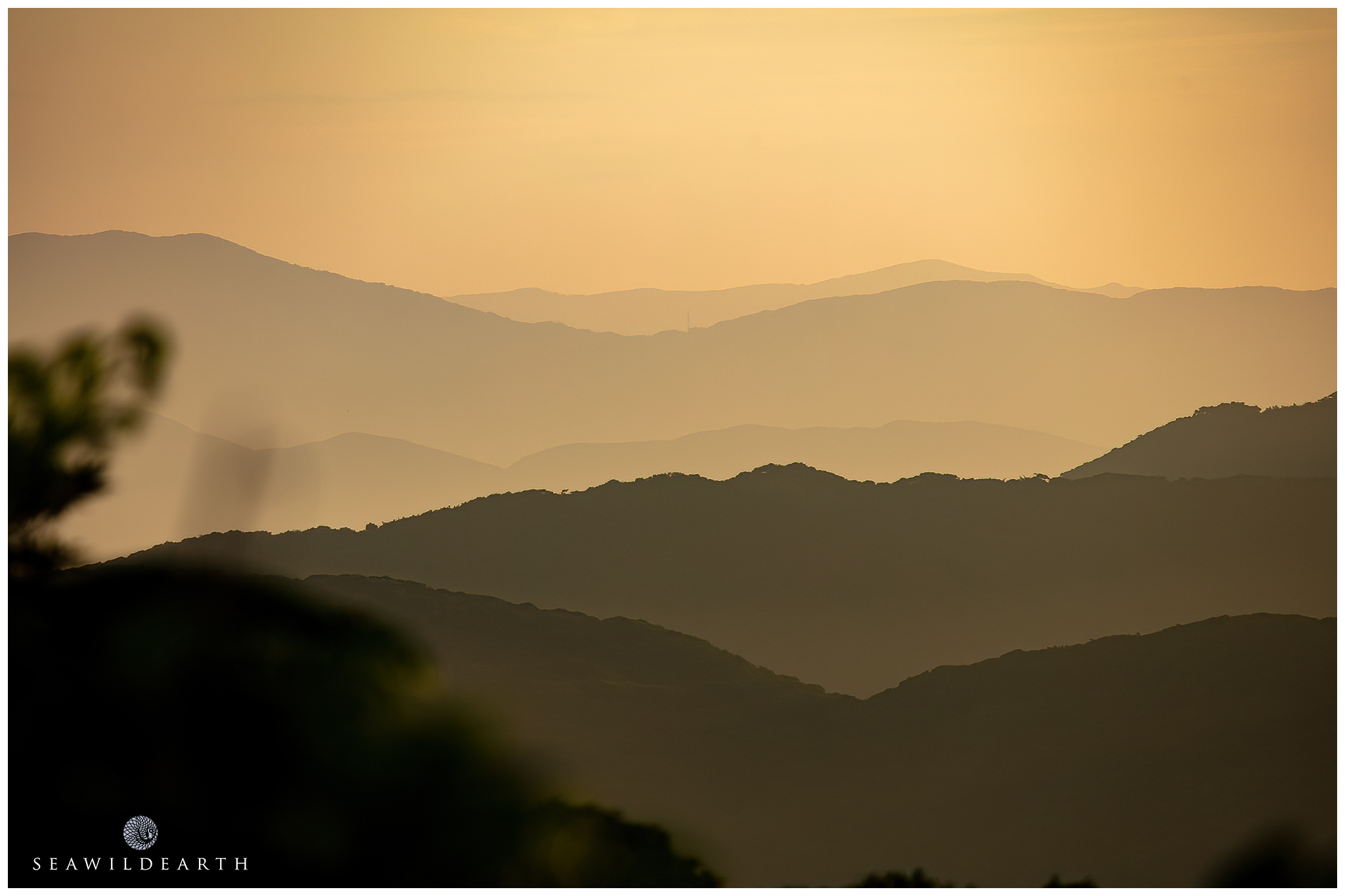
The golden hills of the Yambaru infused with the sunset hues of a summers evening.
Herping Tour Prices
Depending on the tour you wish to make will determine both the duration and the fee. Our Northern Tours involve at least a 3hr round trip drive to get to and from the trek location depending on the site visiting. Our Southern herping treks are made within the Yomitan region of the island.
Please note that there is a reduced rate for the younger attendees of 12yrs and younger. We also request that you also prepare items that you will need for the duration of the trek. These will include any snacks or refreshments, we do not permit the consumption of alcohol on treks. Forecasted weather conditions will determine your clothing options. That said the chance of light rains should not be seen as a negative as a lot of Reptiles and Amphibians prefer those conditions. We ask that people do not geotag whenever they post imagery to social media due to the potential of poaching. Nefarious elements also read blogs and scour social media looking for leads on species locations etc.
Bespoke Guiding
- $175ppDependent on Request
- Guide Service
- Targeted Species
- Photographers, Film Makers, and Scientists
Northern Okinawa
- $65pp3hrs
- Guide Service
- Children under 12yrs - $45pp
- Minimum Pax - 4
Southern Okinawa
- $45pp2hrs
- Guide Service
- Children under 12yrs - $35pp
- Minimum Pax - 6
A Rogues Gallery of Wildlife Encountered in Okinawa
These are the just some of the numerous species encountered during nocturnal forays into the wilds of Okinawa main island, in no order of priority or scarcity.
Whether for still or video shooters these remain some of the most requested species to date. With all imaging tours, I ask that people do not geotag when sharing any resulting imagery. It comes as no surprise that those targeting the iconic wildlife of Okinawa for illegal collection also read web features such as this.
Odorrana ishikawae
Encountered in either Green or Blue variations this critically endangered species has been designated as a National Monument of Okinawa. It occupies small pockets of Jungle on the main island as well as Amami Oshima to the North.
Goniurosaurus kuroiwae
This is Mark's favorite species to be encountered in the Jungles. It is an endangered species that can be skittish to approach. Found in green spaces throughout the main island it is at threat from poaching, human encroachment and habitat loss.
Ovophis okinavensis
Potentially the most encountered of the three main pit viper species known to inhabit the main island of Okinawa. Fully grown at 80cm this squat yet easily identifiable snake is often found close to areas where frogs congregate.
Echinotriton andersoni
Often described as a living dinosaur this endangered ground-dwelling Newt is clearly identified by very noticeable ridges along its flanks. It inhabits certain pockets of the island where specific environmental criteria are met. Illusive.
Protobothrops mucrosquamatus
An invasive species from Taiwan the Taiwan Habu is responsible for a decline in naturally occurring species of frogs and other prey items in Okinawa. Often encountered on ledges and around the numerous stone burial placements.
Racophorus viridis viridis
There are times of the year when the jungle is filled with the calls of the Green Tree Frog. At these times the aggregations tend to be for mating and as such ring the dinner bell for the numerous predators that prey on these diminutive frogs.
Lycodon semicarinatus
The most often encountered non-venomous snake species throughout Okinawa. Known locally as the 'Akamata' it exists on a diet of frogs, lizards and insects. It has also been said to eat Habu, although this remains to be documented.
Geoemyda japonica
This endangered species is often targeted by poachers and illegal collectors for sale in the illegal pet trade. Endemic to the Ryukyu Islands they, fortunately, camouflage very well and are not an easy species to encounter.
Babina holsti
Endemic to the island of Okinawa and to the small island of Takashiki in the Kerama Islands to the west of Okinawa. Threatened by habitat loss due to human encroachment and the construction of dams it is listed as endangered.
Hebius pryeri
The Pryer's Keelback snake is found throughout the Ryukyu Islands anywhere where frogs, particularly the diminutive Kajika frog, congregate. Agile and slim it poses no threat to humans even though it is very slightly venomous.
Cicindela chinensis japonica
Walk through any area close to a body of water or stream and you'll see lots of colorful bugs flying around. Incredibly skittish by day it's tough to get a clear shot. By night it's another story as they sleep on vegetation making photography easy.
Buergeria japonica
The readily abundant Ryukyu Kajika Frog has big eyes and an impressive leap for good reason! They are the favored prey items of most predatory reptiles throughout Okinawa. Colors range from bright yellow to mottled grey/brown.
Protobothrops elegans
Endemic to the Yaeyama Islands such as Iriomote and Ishigaki there have been sightings on Okinawa's main island given the introduction of this beautifully colored Pit Viper. Its venom has a lower potency than the established Habu species.
Diploderma polygonatum polygonatum
Often encountered by day as it lazes in the sun. Skittish during the day it can be found sleeping in vegetation by night. An invasive species originating from the mainland. No eradication programs are currently in place.
Odorrana narina
Yet another endemic species to the islands of Okinawa. The Ryukyu tip-nosed frog's conservation status is currently listed as threatened. This frog is often encountered during nocturnal jungle walks especially during, or after, rainfall.
Dolomedes orion
These impressive sized arachnids can be found along the banks of most rivers and streams in Okinawa. The white patches on their forelegs act as lures when dipped into the gently flowing waters attracting both small fish or shrimp.
Scutigera coleoptrata
Found in caves or around rocky areas this certainly looks like a creature from your nightmares. Capable of surprising turns of speed it can attain lengths of up to 4inches and can inflict a bee-like sting as a form of self-defense/predation.
Protobothrops flavoviridis
One of the rarest snakes to encounter in Okinawa is the Silver Habu. At the time of writing we have only thus far had one encounter with this species which was filmed, thus the image you see here is a video still taken from 4k resolution video.
Protobothrops flavoviridis
Possibly Okinawa's most infamous Pit Viper. Growing to lengths of up to 240cm they inject a massive dose of venom when biting. Only 1% of bites on humans result in death but most victims experience long-term disability of some form.
Polypedates leucomystax
First encountered in Okinawa in 1964 the White Jawed Frog, aka the White Lipped Frog is an invasive species possibly originating from the Philippines. It ranges throughout the island and is a favored prey item of the various Habu snake species.
Your Guide to the Wildlife of Okinawa
Due to the unique history of Okinawa numerous species found on the main island are both endemic, as in found nowhere else on Earth, and sadly endangered due to habitat loss. It is a veritable treasure trove of unique and interesting wildlife.

Cameraman / Photographer
Mark Thorpe
Northern Okinawa is defined by an Ocean of green, the dense rolling hills of what the locals call the 'Yambaru' roughly translated as "rolling green hills". This literal sea of vegetation is dense, green, and for the most part uncharted. It serves as home to an incredible diversity of flora and fauna, many of which are found nowhere else on earth. Within its boundaries there are living monuments, national treasures and regional emblems, all titles bestowed on specific species found therein. So where does one start if one has the desire to encounter and photograph one, or more, of these unique species? Herping Tours in Okinawa are best enjoyed by engaging the use of a guide who has, over a number of years, recorded optimal times for species-specific encounters and of course, the best places to find them is normally going to be your best plan.
Mark Thorpe is an *Emmy Award-winning underwater and wildlife cameraman. He cut his imaging teeth in some of the most pristine and, at times, challenging dive locations around the World. he is a sponsored landscape photographer who spends as much time as he can in his personal quest to document the wildlife in Okinawa for a planned production of a Coffee Table Book about the Yambaru and its inhabitants. He has thus far been on this quest for the past five years.
Responsible for the provision of stock footage, and as a commissioned camera operator he has worked with some of the largest broadcast and production entities within the Natural History genre. Mark travels extensively throughout the Ryukyu Islands to which the Okinawa prefecture belongs. Living with his wife and son on the main island of Okinawa, and with an in-depth knowledge of the natural spaces and species in the region, he is the perfect solution for helping you get the shots you're looking for from the natural side of Okinawa. Whether you're a single traveling wildlife imaging hobbyist or professional, or indeed a fully-fledged production team Mark should be your first choice of English-speaking guides to the region.

